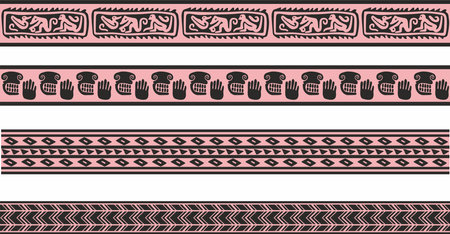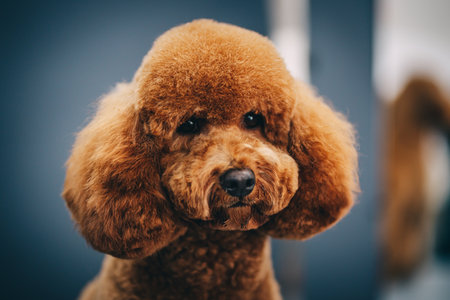1. Introduction to Leashes, Collars, and Harnesses
Choosing the right pet restraint is essential for your dogs safety, comfort, and overall well-being. Whether youre going for a walk in the park or training your pup, using the correct gear can make all the difference. In this guide, well explore the differences between leashes, collars, and harnesses and help you determine which option is best suited for different situations.
Why Choosing the Right Restraint Matters
Not all dogs are the same, and neither are their needs when it comes to walking equipment. Selecting the wrong type of leash, collar, or harness can lead to discomfort, difficulty in control, or even potential injury. The right choice depends on factors like your dogs size, breed, behavior, and activity level.
Overview of Pet Restraints
Here’s a quick breakdown of the three main types of pet restraints:
| Type | Description | Best For |
|---|---|---|
| Leashes | A rope or strap that attaches to a collar or harness, used to guide and control your dog. | Daily walks, training sessions, and public outings. |
| Collars | A band worn around the neck that can hold ID tags and attach to a leash. | Dogs who are comfortable with leash walking and need easy identification. |
| Harnesses | A piece of equipment that wraps around the dogs body to distribute pressure more evenly. | Puppies, small breeds, dogs prone to pulling, or those with respiratory issues. |
Leashes: Types and Best Uses
Choosing the right leash for your dog is important for both safety and comfort. There are several types of leashes available, each designed for different situations. Lets explore the most common leash types and when to use them.
Standard Leash
A standard leash is the most common type, typically made from nylon or leather. It usually ranges from 4 to 6 feet in length, providing enough control while allowing some freedom for your dog.
Best Uses:
- Everyday walks
- Basic training
- Controlled environments
Retractable Leash
A retractable leash extends and retracts, allowing your dog more freedom to roam while still being attached. These leashes can extend anywhere from 10 to 30 feet.
Best Uses:
- Open areas like parks
- Dogs that are well-trained and responsive to commands
- Semi-controlled environments where extra roaming space is safe
Hands-Free Leash
A hands-free leash is designed to be worn around your waist or across your body, making it ideal for active owners who jog or hike with their dogs.
Best Uses:
- Running or jogging with your dog
- Hiking on trails
- Keeps hands free for other activities
Comparing Different Leash Types
| Leash Type | Main Benefit | Best For |
|---|---|---|
| Standard Leash | Provides good control and reliability | Everyday walks, basic training |
| Retractable Leash | Allows more freedom while staying attached | Parks, open spaces, trained dogs |
| Hands-Free Leash | Makes jogging and hiking easier | Active owners, outdoor adventures |
Selecting the right leash depends on your dogs behavior and your lifestyle. Understanding these different options will help you make the best choice for safe and enjoyable walks with your pup.

3. Collars: Choosing the Right Fit
Collars are one of the most common accessories for dogs, serving both functional and identification purposes. Choosing the right collar depends on your dogs size, temperament, and training needs. Below, we’ll explore different types of collars and their best uses.
Flat Collars
Flat collars are the standard everyday collars that most pet owners use. They typically have a buckle or a quick-release clasp and come in various materials like nylon, leather, or fabric.
Best For:
- Everyday wear
- Holding ID tags
- Dogs who don’t pull on the leash
Martingale Collars
A martingale collar is designed to prevent dogs from slipping out while providing gentle control. It has a limited-slip feature that tightens slightly when the dog pulls but does not choke them.
Best For:
- Dogs with narrow heads (e.g., Greyhounds, Whippets)
- Training gentle leash manners
- Nervous or escape-prone dogs
Training Collars
Training collars come in different forms, such as prong collars and choke chains. These should only be used under professional guidance as improper use can harm your dog.
| Type of Training Collar | Description | Caution |
|---|---|---|
| Prong Collar | A metal collar with blunt prongs that apply pressure when pulled. | Should only be used for training purposes and under supervision. |
| Choke Chain | A chain that tightens when the dog pulls. | If used incorrectly, it can cause neck injuries. |
| E-Collar (Shock Collar) | A remote-controlled device that delivers vibrations or shocks. | MUST be used with proper training; misuse can lead to stress and fear. |
Selecting the Right Collar for Your Dog
The right collar depends on your dog’s behavior and needs. If your dog is well-behaved on walks, a flat collar might be enough. If they tend to slip out of collars, a martingale is a great choice. However, training collars should only be considered when necessary and with proper guidance.
4. Harnesses: Benefits and Proper Usage
Harnesses are a great alternative to collars, offering better control and reducing strain on a dog’s neck. They come in different styles, each suited for specific needs. Understanding their benefits and how to use them properly can help ensure your pets comfort and safety.
Benefits of Using a Harness
- Better Control: Especially useful for strong or energetic dogs that tend to pull on the leash.
- Even Pressure Distribution: Reduces strain on the neck, making it a safer option for dogs prone to respiratory issues.
- Prevents Escaping: Some dogs can slip out of collars, but a well-fitted harness provides better security.
- Comfortable for Long Walks: Reduces discomfort and irritation compared to collars, especially for breeds with delicate throats.
Front-Clip vs. Back-Clip Harnesses
Harnesses come in two main styles: front-clip and back-clip. Choosing the right one depends on your dog’s behavior and training needs.
| Type | Best For | Pros | Cons |
|---|---|---|---|
| Front-Clip Harness | Dogs that pull during walks | – Helps discourage pulling – Provides better control |
– May tangle under legs if not fitted properly – Not ideal for highly active dogs that run a lot |
| Back-Clip Harness | Calm walkers or small breeds | – Easy to put on – Comfortable for everyday use |
– Less control over strong pullers – Can encourage pulling if not trained properly |
When to Use a Harness
- Puppies Learning to Walk: A harness helps prevent choking while they get used to walking on a leash.
- Brachycephalic Breeds (Short-Nosed Dogs): Breeds like Pugs and Bulldogs benefit from harnesses since they reduce pressure on their airways.
- Dogs Prone to Neck Injuries: If your dog has had past injuries or is prone to tracheal collapse, a harness is a safer choice than a collar.
- Hiking or Outdoor Adventures: A harness provides better support and control in active outdoor settings.
- Aggressive Pullers: Dogs that tend to pull hard benefit from front-clip harnesses to help guide their movement more effectively.
Proper Fit and Adjustment Tips
- A good fit should be snug but not too tight—ensure you can fit two fingers between the harness and your dogs body.
- The chest strap should rest across the dogs breastbone, not the throat, to avoid discomfort.
- If your dog resists wearing the harness at first, introduce it gradually with positive reinforcement.
- Check regularly for signs of wear or chafing and adjust as needed for continued comfort.
A well-fitted harness can make walks more enjoyable while keeping your dog safe. Understanding when and how to use one ensures you provide the best experience for both you and your pup.
5. How to Decide: Factors to Consider
Choosing between a leash, collar, or harness depends on several factors, including your dogs breed, behavior, and training goals. Each dog is unique, so selecting the right option requires understanding their specific needs.
Breed Considerations
Different breeds have different physical characteristics that can influence whether a collar or harness is the better choice. Some dogs have delicate necks, while others have strong pulling tendencies.
| Breed Type | Recommended Option | Why? |
|---|---|---|
| Small Breeds (e.g., Chihuahua, Pomeranian) | Harness | Avoids pressure on their fragile necks |
| Brachycephalic Breeds (e.g., Pug, Bulldog) | Harness | Prevents breathing difficulties and tracheal issues |
| Large Breeds (e.g., Labrador Retriever, German Shepherd) | Collar or Harness | A harness helps with control; collars are fine for well-trained dogs |
| Sighthounds (e.g., Greyhound, Whippet) | Sighthound-Specific Collar or Harness | Their slender necks require specialized collars for safety |
Behavior and Training Goals
Puppies and Training Dogs
If you’re training a puppy or an untrained dog, a harness with front-clip attachments can help discourage pulling while giving you better control.
Pulled Too Hard? Try a No-Pull Harness
If your dog tends to pull excessively during walks, a no-pull harness distributes pressure evenly across their chest rather than straining their neck.
Easily Distracted Dogs
If your dog gets distracted easily by other dogs or people, a head collar may provide extra control by guiding their head movements.
Selecting the Right Leash Type
The type of leash you choose also matters based on your walking environment and training needs.
| Leash Type | Best For | Description |
|---|---|---|
| Standard Leash (4-6 ft) | Everyday Walks & Basic Training | A reliable option for most dogs; provides good control. |
| Retractable Leash | Dogs That Are Well-Trained Off-Leash | A flexible choice but not ideal for dogs that pull. |
| Hands-Free Leash | Jogging or Running with Your Dog | Around-the-waist design allows free movement. |
| Tactical/Training Leash | Larger Dogs & Obedience Training | A multi-functional leash with added features for control. |
| Long Line Leash (10+ ft) | Recall Training & Exploration Areas | A great tool for off-leash training in controlled environments. |
The Best Fit for Your Dog’s Needs
Your choice should always prioritize your dogs comfort and safety. Whether it’s a collar, harness, or specific leash type, selecting the right gear ensures enjoyable and stress-free walks for both of you.
6. Final Tips for Safe and Comfortable Use
Using leashes, collars, and harnesses properly ensures your pets safety and comfort. Here are some practical tips to help you choose, fit, and maintain these essential accessories.
Choosing the Right Fit
A well-fitted leash, collar, or harness is crucial for your pet’s comfort and safety. Here’s a quick guide to ensure a proper fit:
| Accessory | Fit Check |
|---|---|
| Collar | Should be snug but allow two fingers to fit between the collar and your pet’s neck. |
| Harness | Should be secure without restricting movement or causing chafing; check that straps are not too tight. |
| Leash | The length should suit your walking environment—shorter for busy areas, longer for open spaces. |
Regular Maintenance and Inspection
Your pet’s gear should be checked regularly for wear and tear. Damaged equipment can lead to accidents or discomfort. Follow these maintenance tips:
- Inspect for Damage: Check buckles, stitching, and material for fraying or weakness.
- Clean Regularly: Wash collars and harnesses with mild soap and water to prevent skin irritation.
- Replace When Necessary: If the leash or collar shows significant wear, replace it before it breaks unexpectedly.
Ensuring a Positive Experience
Your pet should feel comfortable and secure when using any walking accessory. Here are some ways to make their experience better:
- Introduce Slowly: Let your pet get used to a new collar or harness indoors before heading outside.
- Avoid Over-Tightening: A too-tight fit can cause discomfort or breathing issues.
- Praise and Reward: Use treats and positive reinforcement to associate wearing gear with good experiences.
Troubleshooting Common Issues
If your pet resists wearing a collar or harness, try these solutions:
| Issue | Solution |
|---|---|
| Pawing at or trying to remove the harness/collar | Ensure its not too tight; gradually increase wear time indoors with rewards. |
| Pulling excessively on the leash | A front-clip harness can help discourage pulling; consider leash training techniques. |
| Biting or chewing the leash | Toy distractions can help; use a durable leash if your pet tends to chew. |
A well-fitted leash, collar, or harness will make walks enjoyable for both you and your pet. Regular checks and positive reinforcement can help ensure their long-term comfort and safety.


